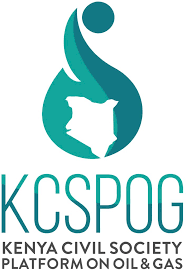Understanding the Basics of the Oil and Gas Industry In Kenya
By Michelle Makena
Oil and Gas industry is considered one of the biggest sectors in the world in terms of monetary value. Both of these minerals are crucial to the global economic development; think of everyday uses such as propelling vehicles, producing electricity, carrying out household functions and many others. Individuals looking into entering or learning more about this sector can quickly be overwhelmed by the complex terms and unique metrics used all through the sector. This piece is written to help anyone understand the basics of the in Oil and Gas industry.
Petroleum Exploration in Kenya began in the 1950s within the Lamu Basin. However, It was not until 2012 when the first commercially viable oil discovery was made in the Tertiary rift. So far over 86 wells have been drilled with a majority within the Tertiary Rift. An estimate of over 4 billion barrels of crude oil reserves have been discovered in Lokichar.
Segmentation
The Oil and Gas industry is divided into three segments: Upstream, Midstream and Downstream. Think of this as a supply chain of the Oil and Gas industry. While most of the companies are segmented, some of the companies are considered integrated. This means that it can be a mixture of Upstream, Midstream and Downstream activities. Companies can also be private, public or state-owned.
Upstream
Upstream companies focus on exploration and production of crude oil and natural gas through drilling processes to recover these resources both underground and underwater. Some of the exploration blocks are mostly found throughout Turkana County. Examples of upstream players include: Tullow Oil, Africa Oil and Total.
Midstream
Once resources have been obtained, Midstream companies handle the transportation and storage of the resources to different geographical locations that deals with refinery. Midstream companies rely heavily on upstream companies for production in order to be in business. The transportation takes place through tanker ships, trucking fleets or pipelines. Examples of Midstream companies are Kenya Pipeline Corporation (KPC) which transports petroleum products from Mombasa to Hinterland. However, KPC is cross cutting between Midstream and Downstream because In Kenya we currently don’t have a midstream company. In the event Kenya has a midstream, KPC will be or should be the government’s representative. Ministry of Energy and Ministry of Petroleum and Mining refer to KPC as a midstream company and classify the pipeline and storage as midstream operations.
Downstream
Lastly, we have the Downstream companies. These are companies that deal with refining raw materials obtained during the upstream phase. They turn crude oil and natural gas into diesel, petrol, gasoline, lubricants, kerosene, jet fuel, heating oil, etc. In February 2019, the Kenyan government announced that it will not construct a local refinery to process crude oil from the Turkana oil fields, opting instead to export all its crude oil while continuing to import refined petroleum for domestic use. This is because of insufficient crude oil to justify construction of a refinery. These companies rely on profit margins that come from acquiring crude oil and selling it into a finished product.
NEMA is a regulator, whose role cuts across upstream, midstream and downstream functions.
Issues affecting the supply chain of Oil and Gas in Kenya
- Quality issues are becoming constraining as new fuel requirements demand more complex processing and expensive investment. These investments do not always guarantee an attractive return.
- Environmental regulations and compliance rules are also becoming increasingly severe. This makes the operation of existing facilities and construction of new ones more expensive and intricate and difficult.
- The fuel demand in Kenya is low thus leaving providers with surplus materials that they cannot supply.
In Kenya, we currently have over 60 registered Oil companies, with the biggest market shareholder being Vivo Energy. Its market share is at 28.0%, followed by Total Kenya at 23.1%. Other well-known oil marketing companies consist of: Rubis, National Oil Corporation, Engen and Ola Energy.

